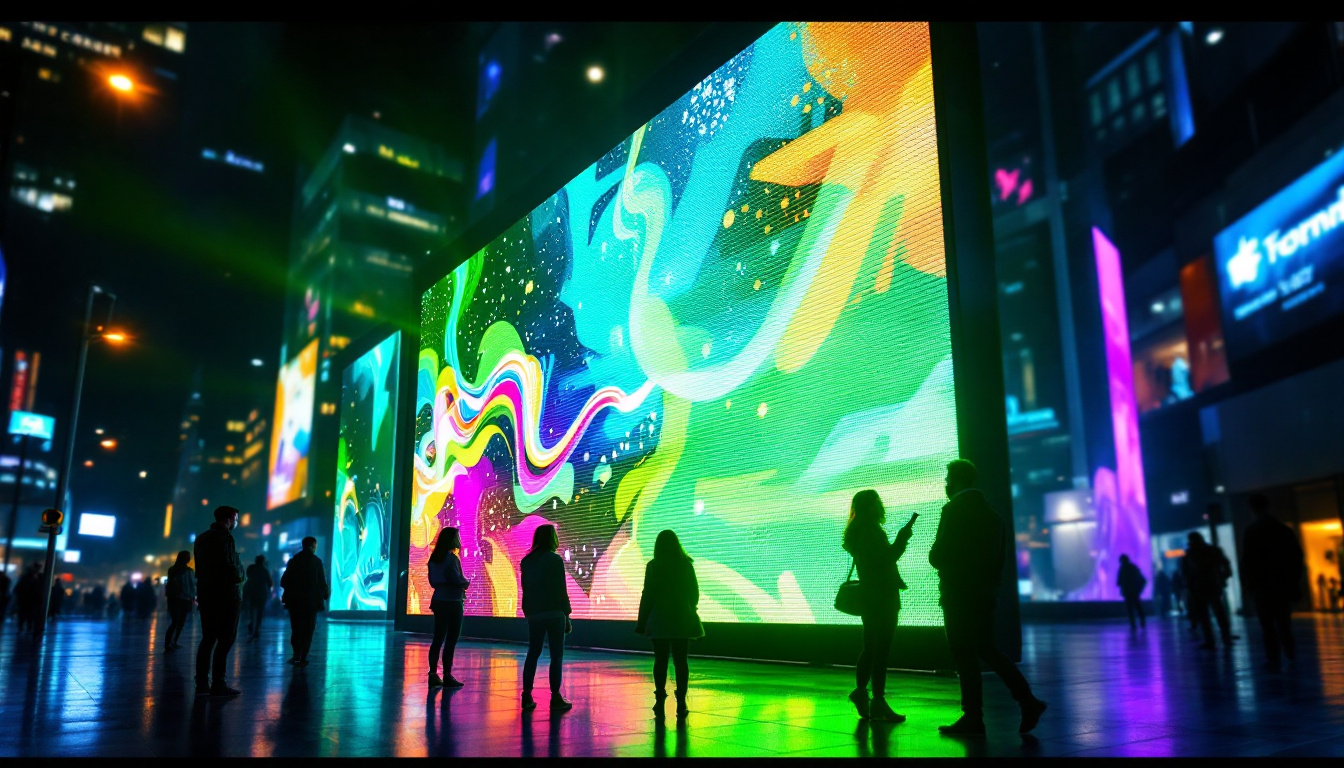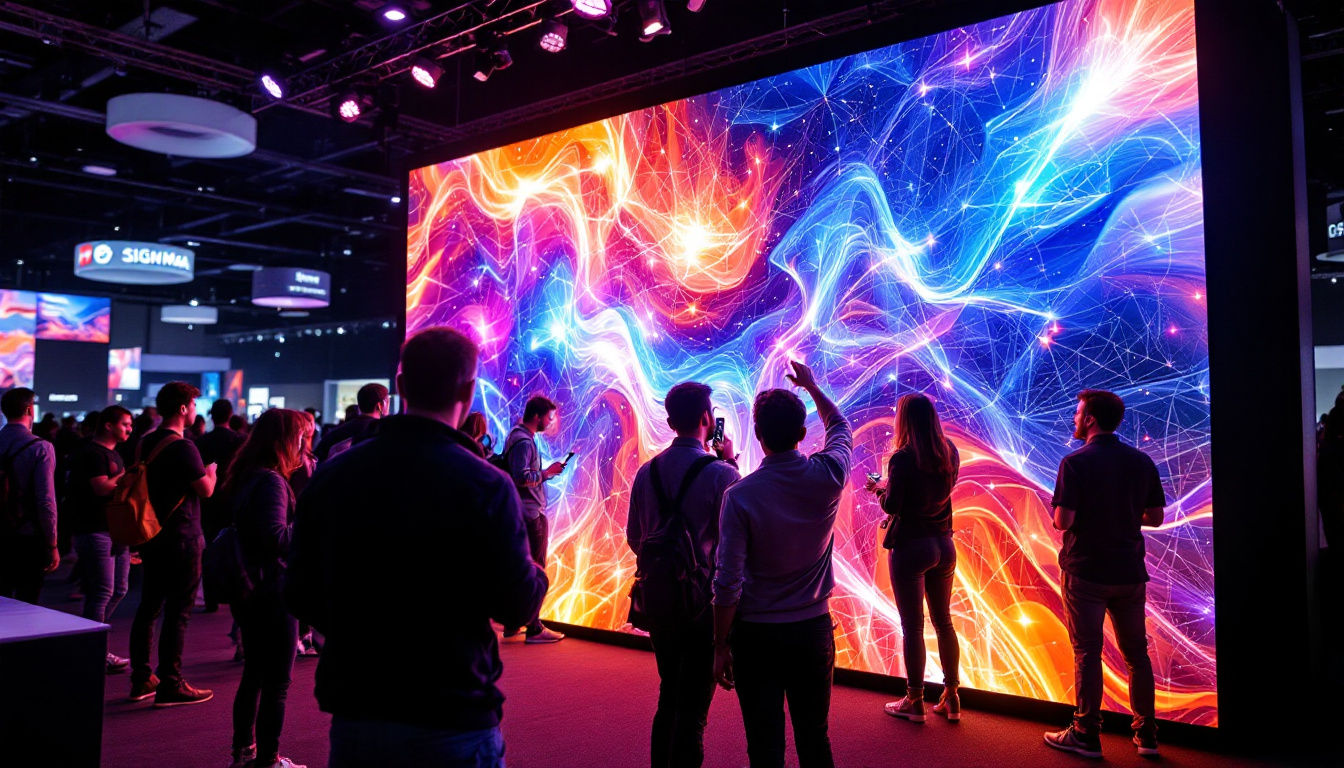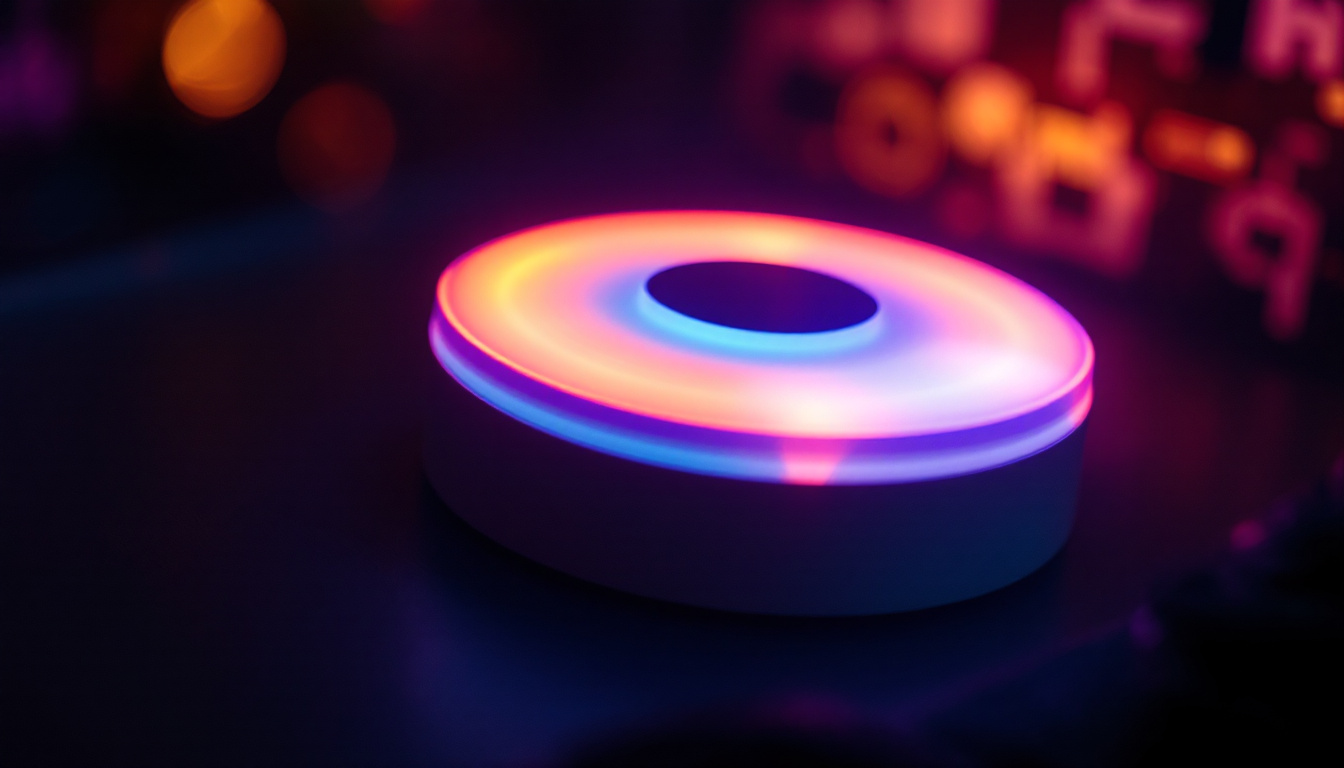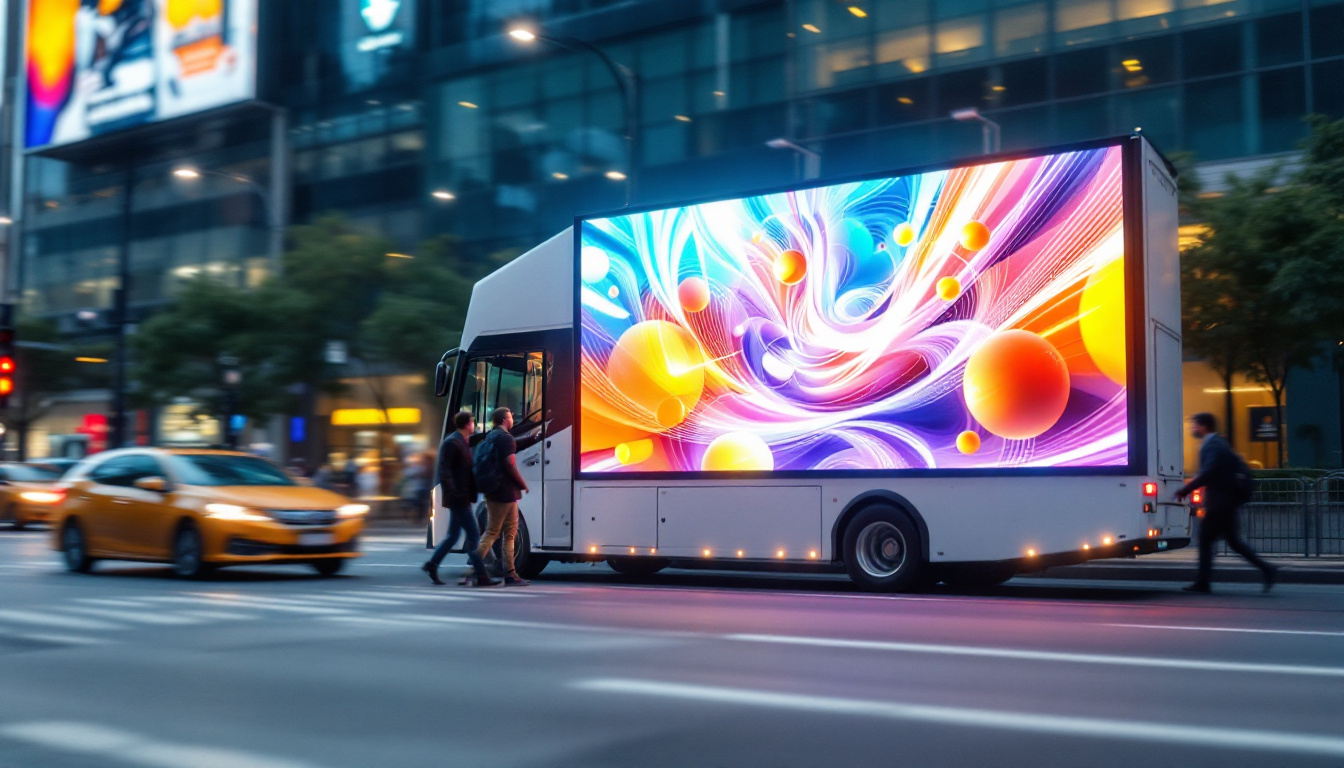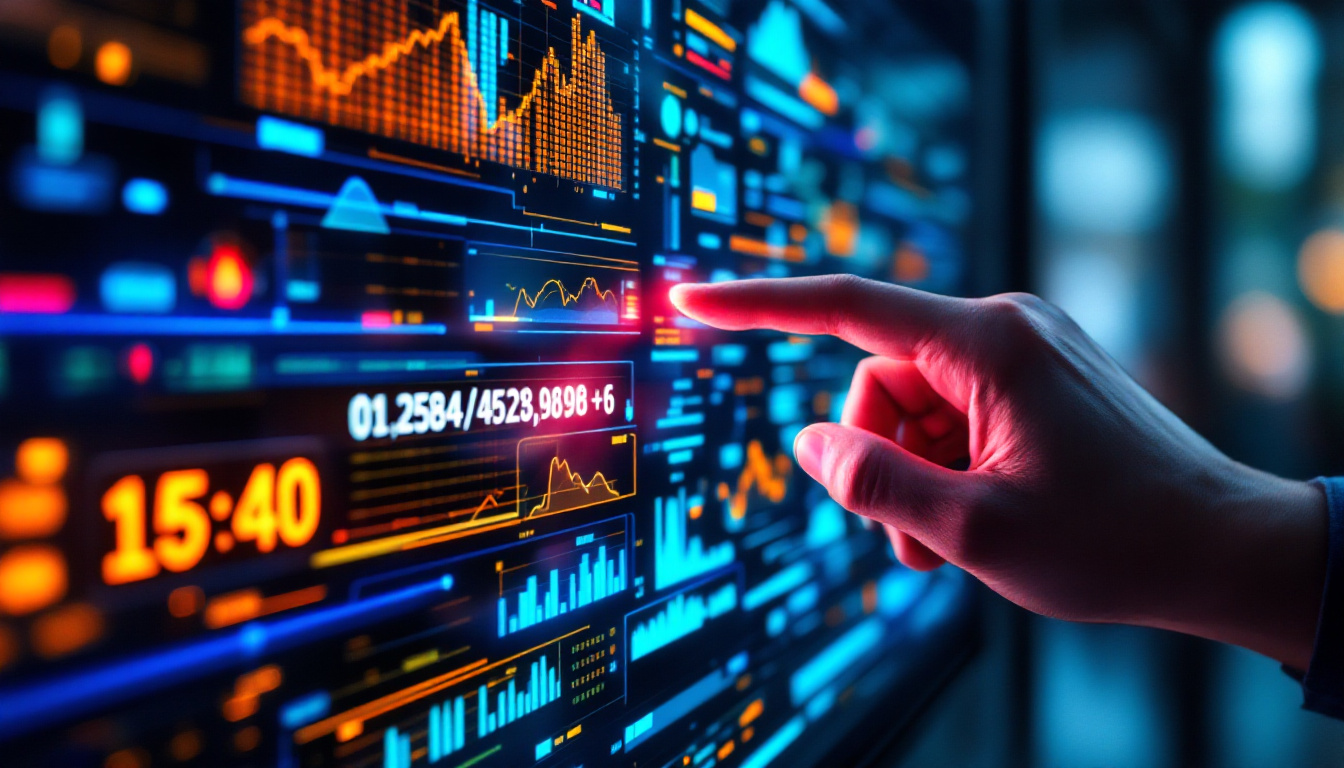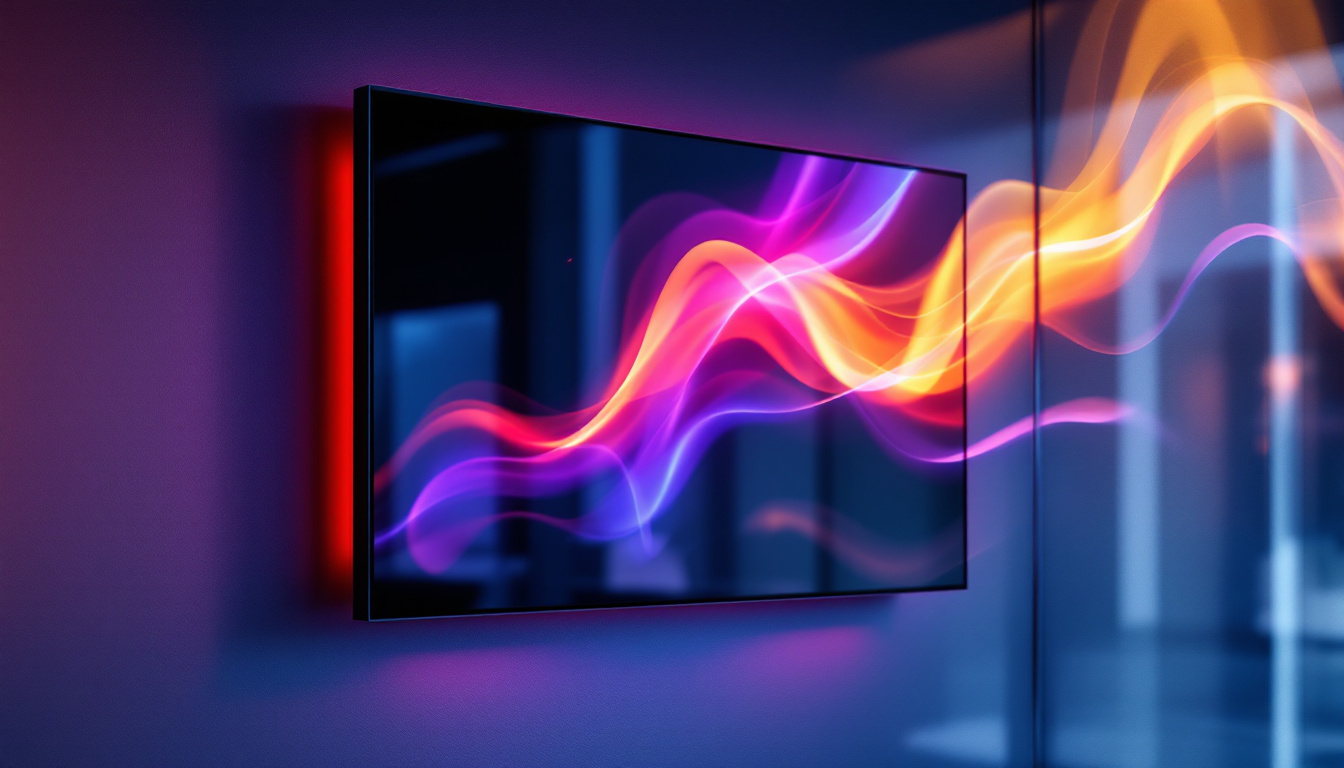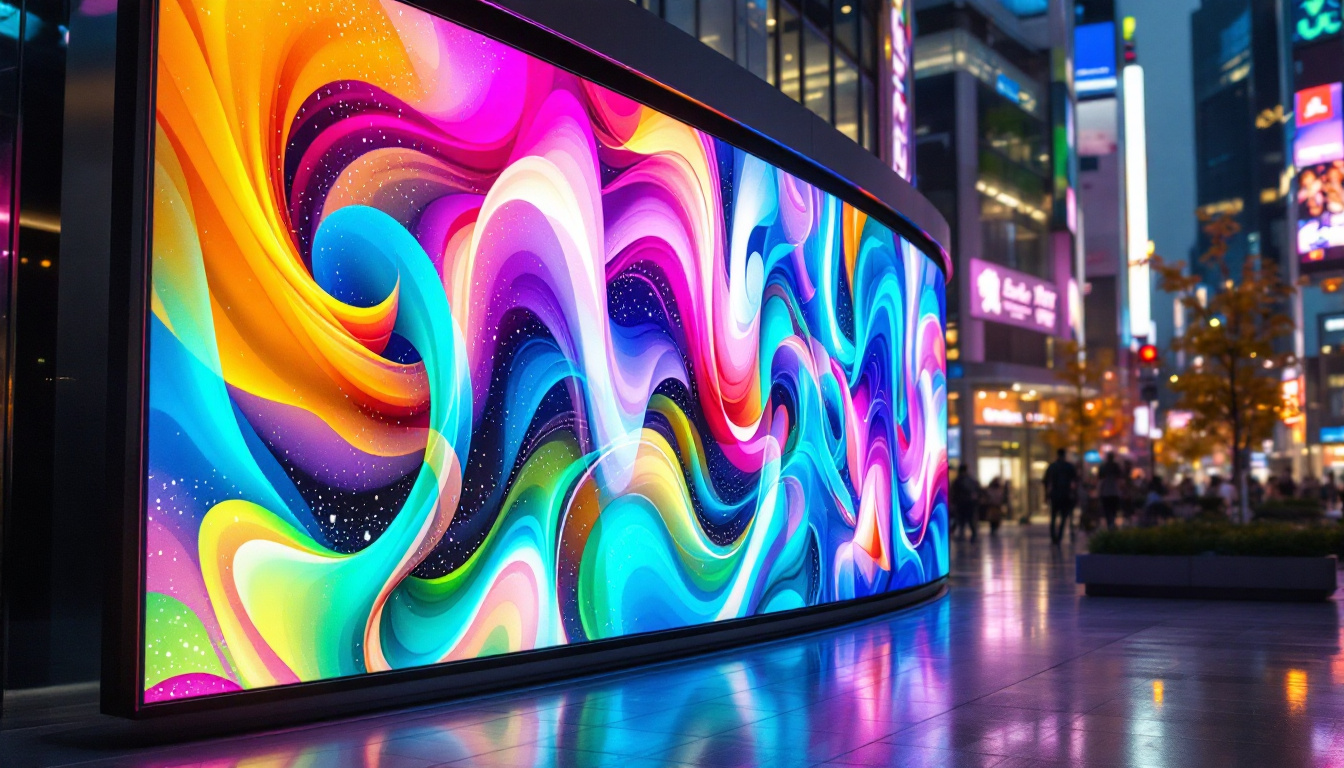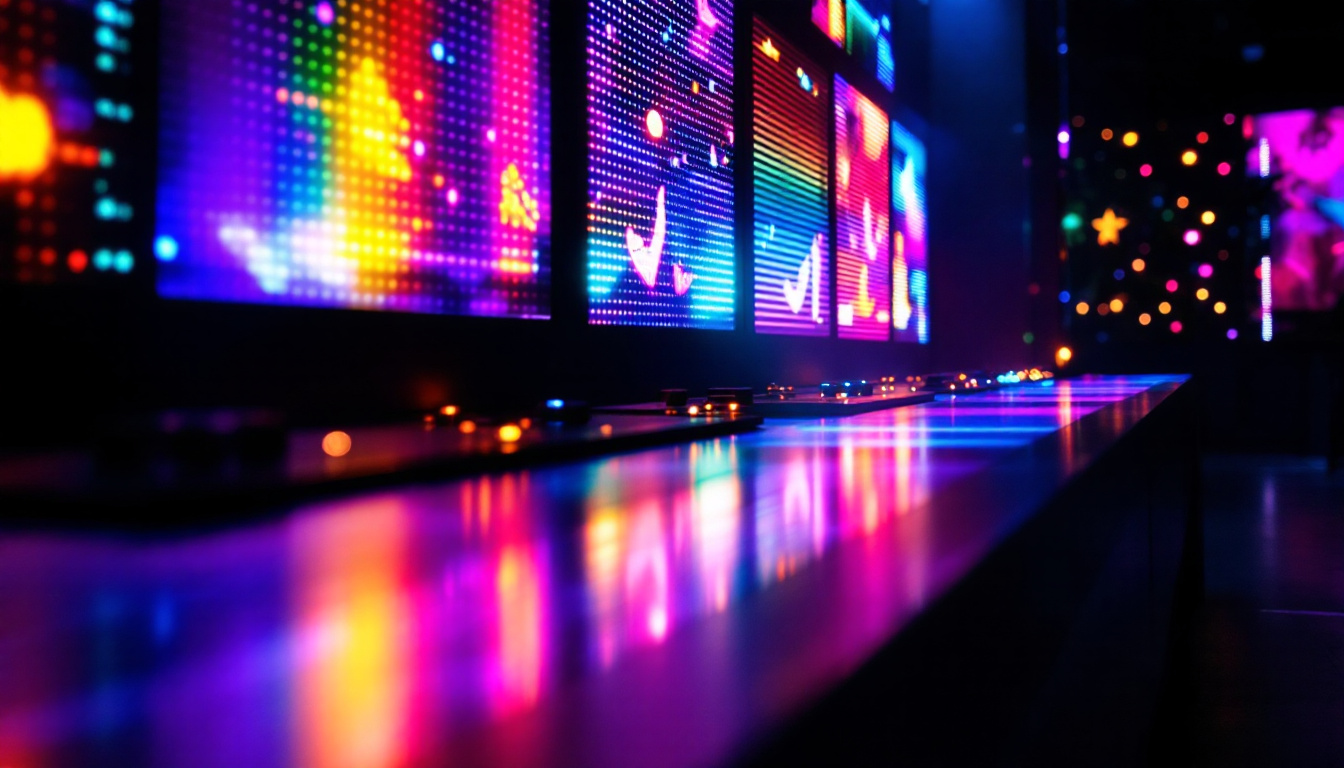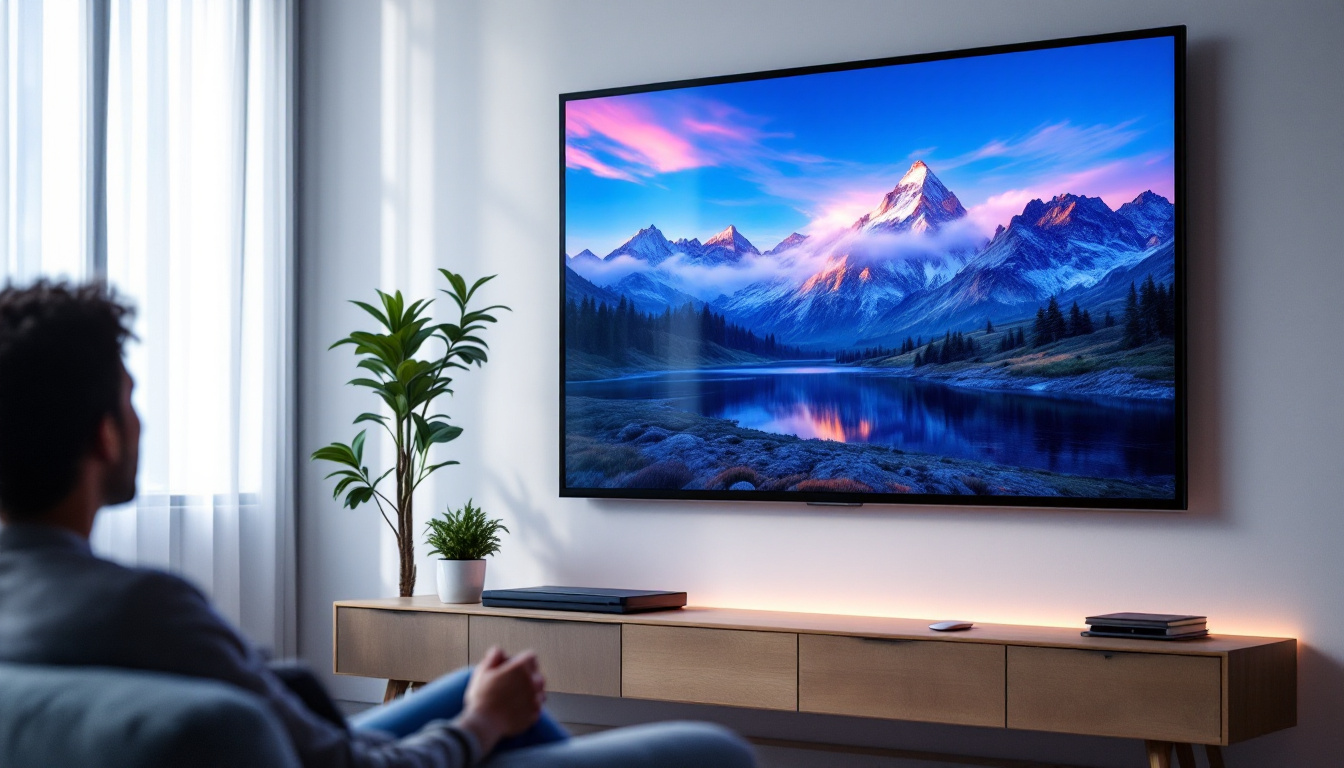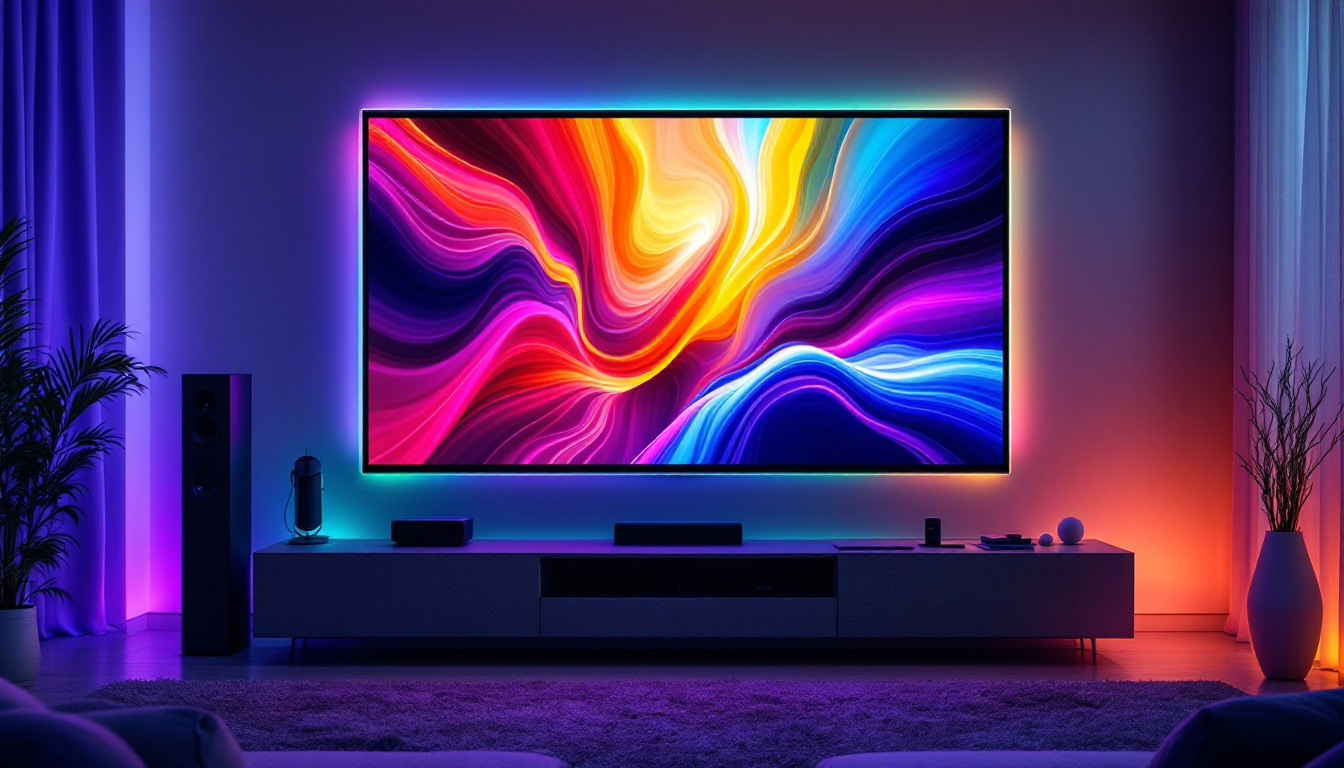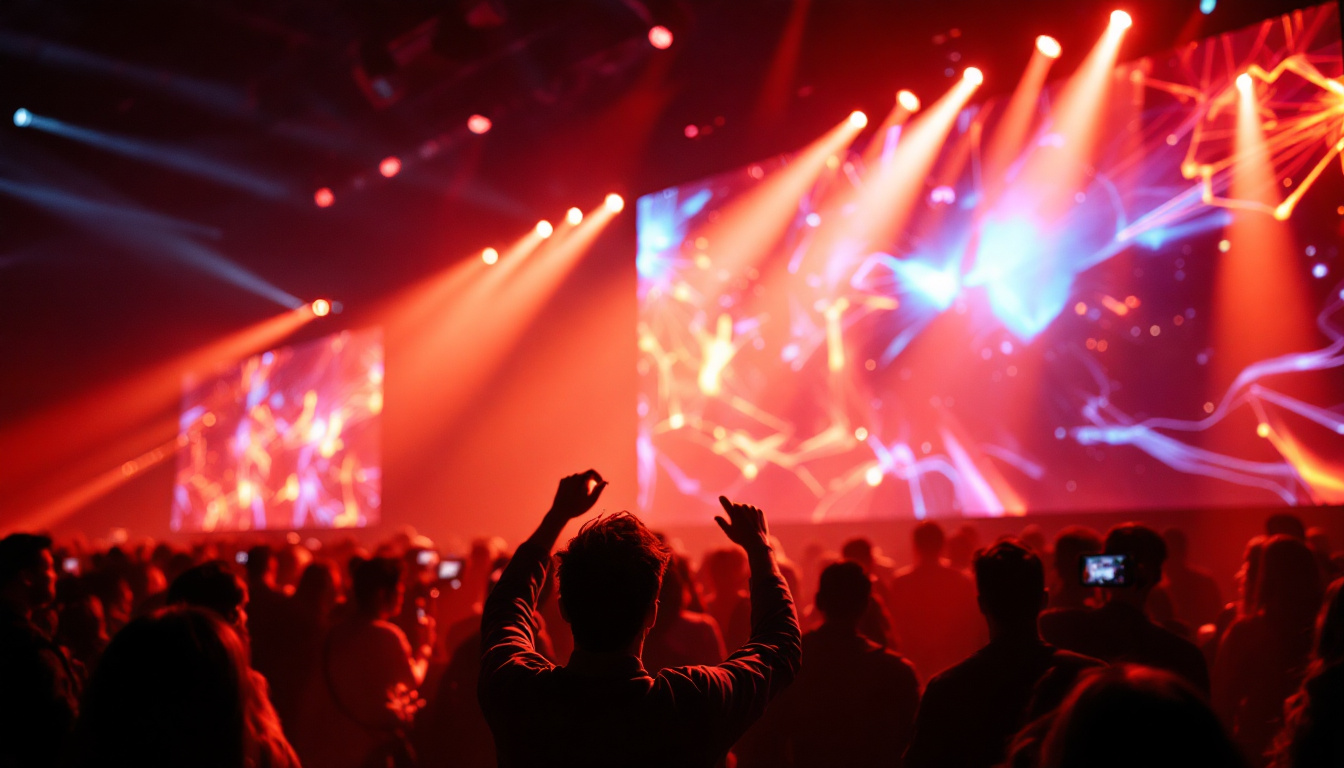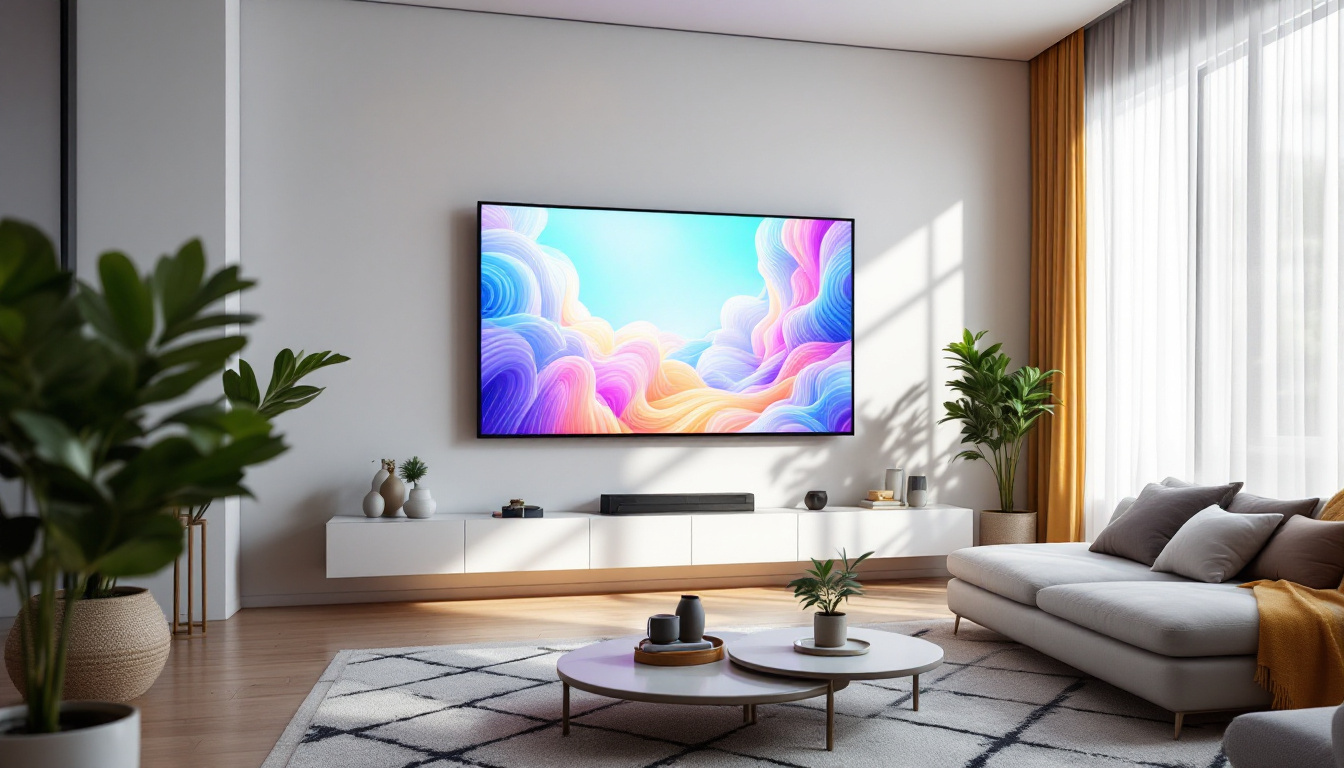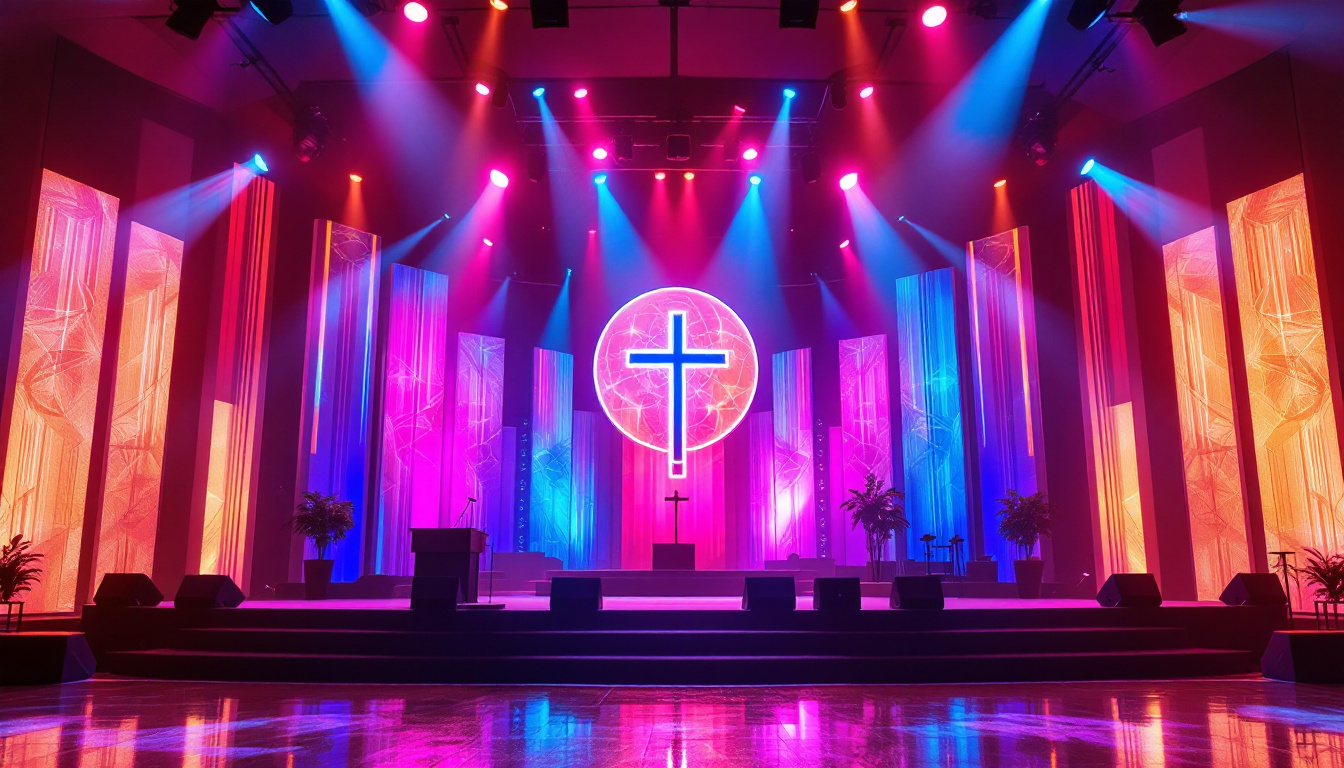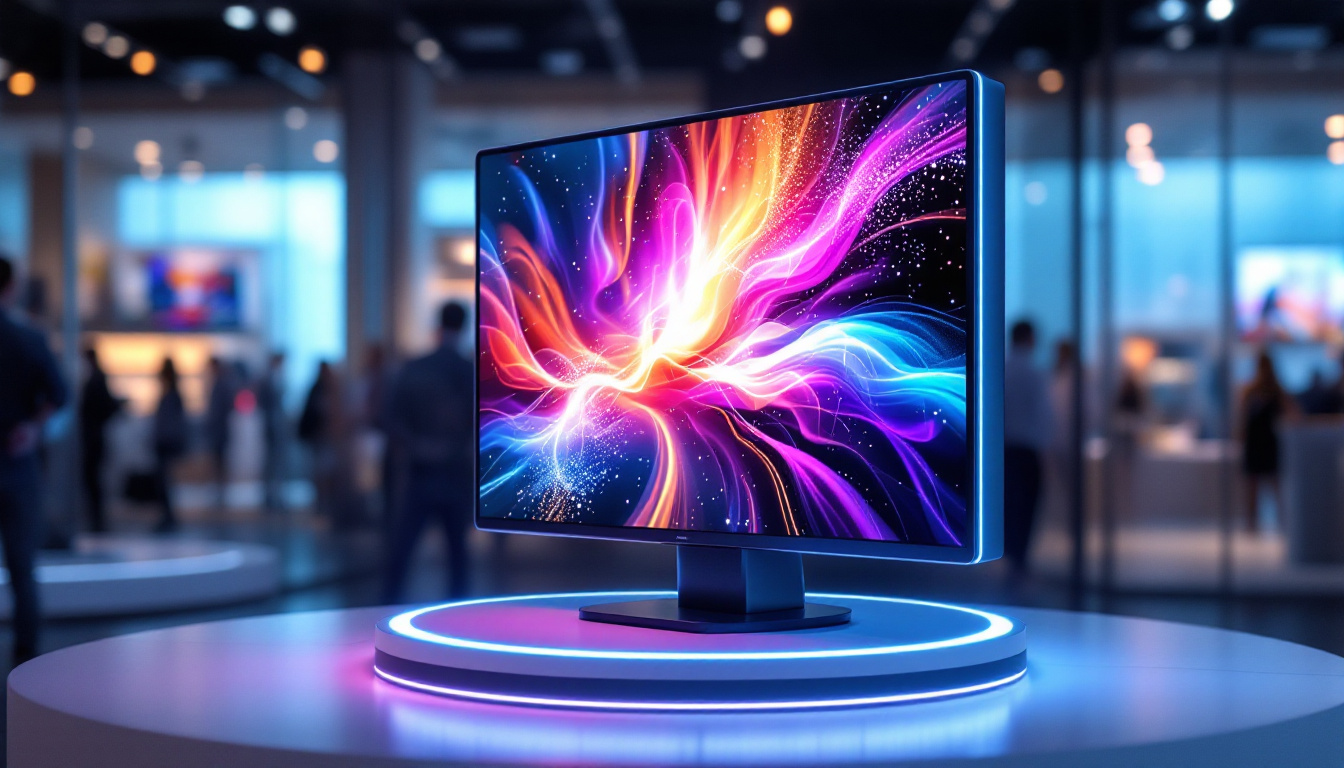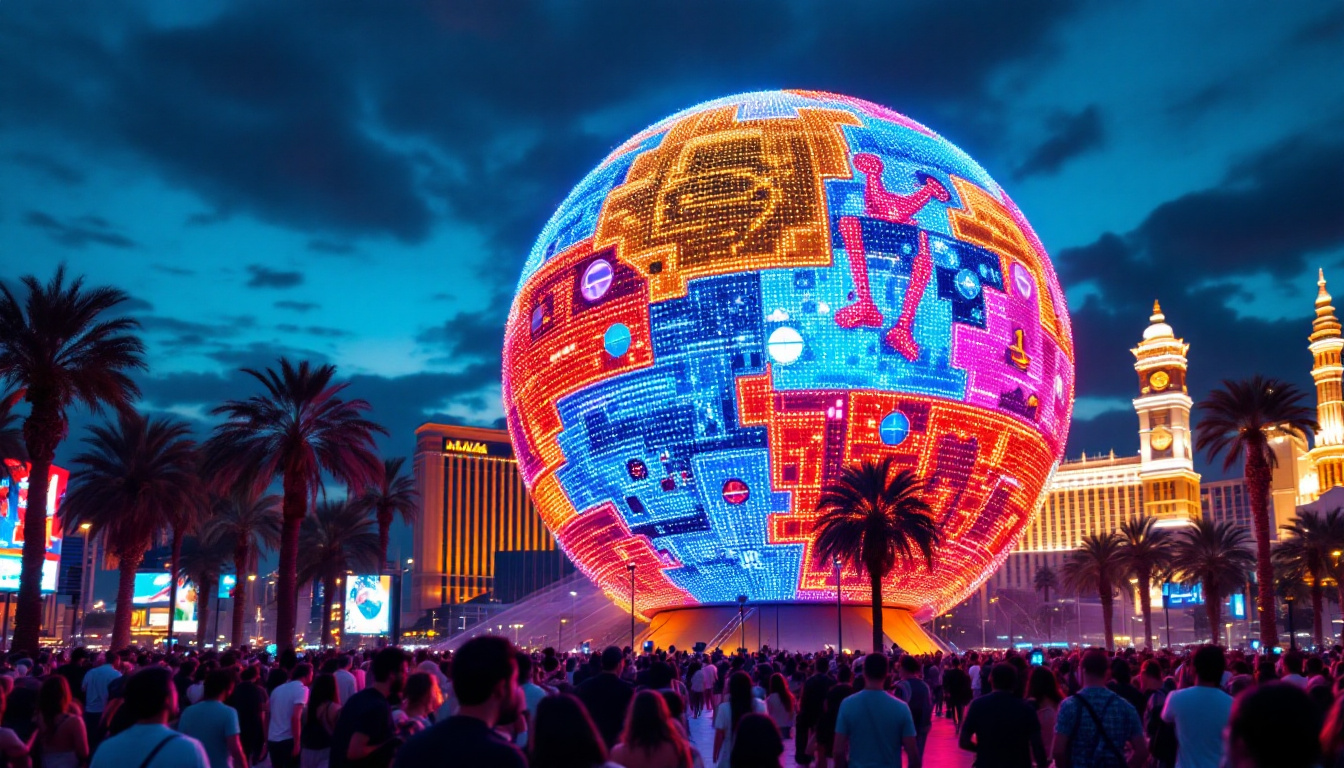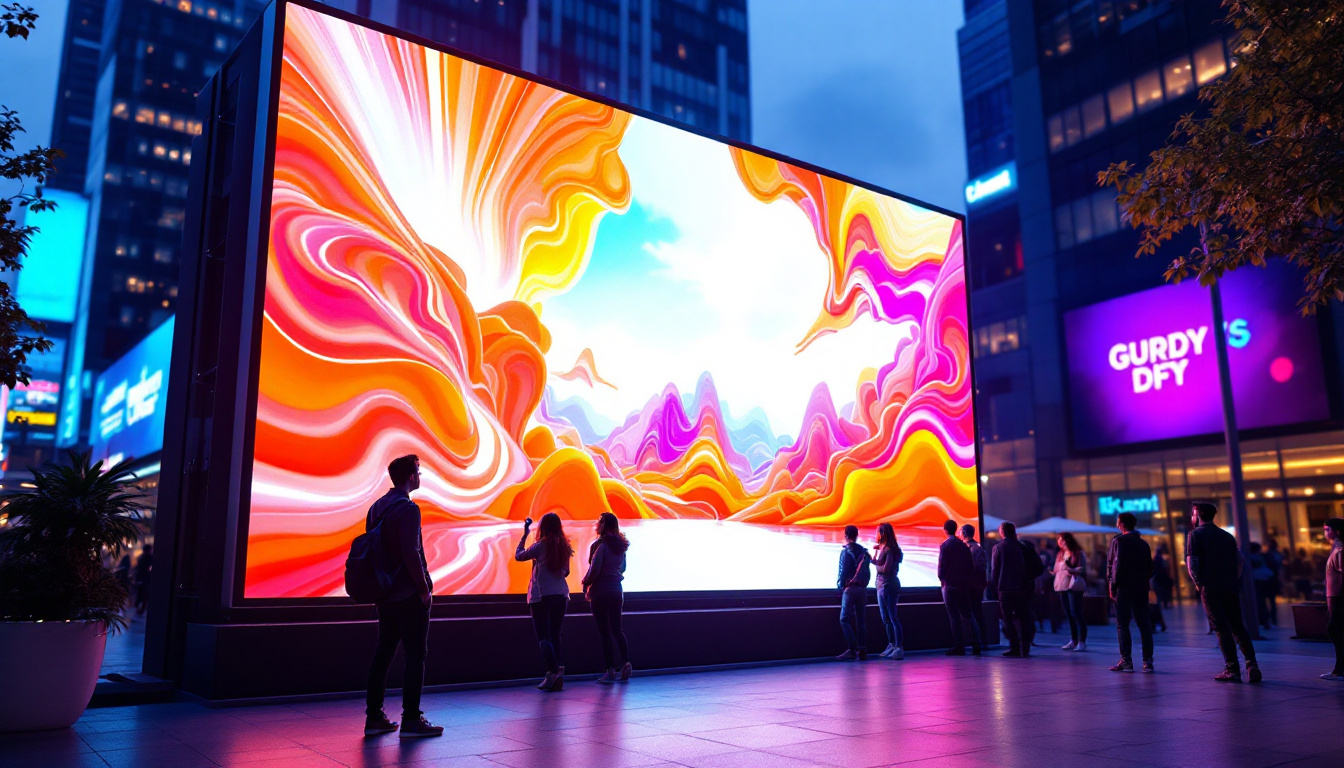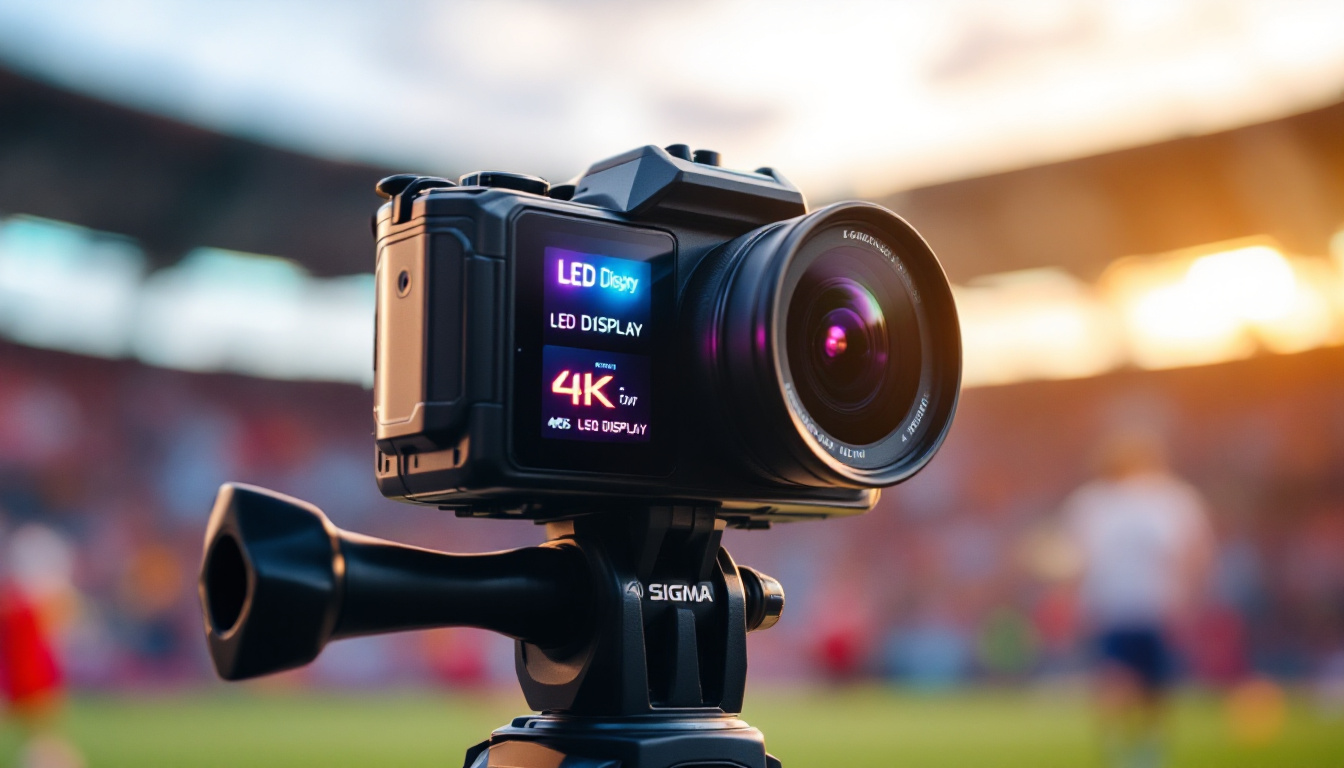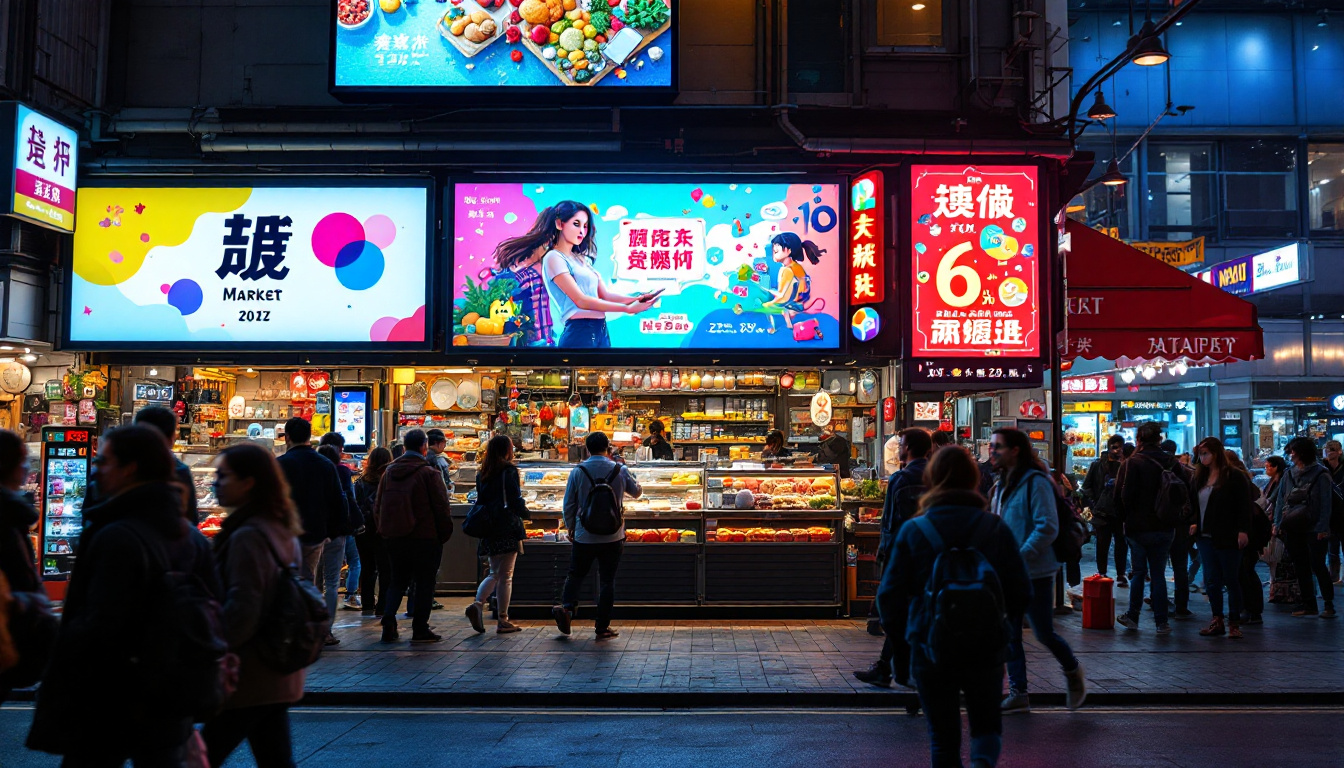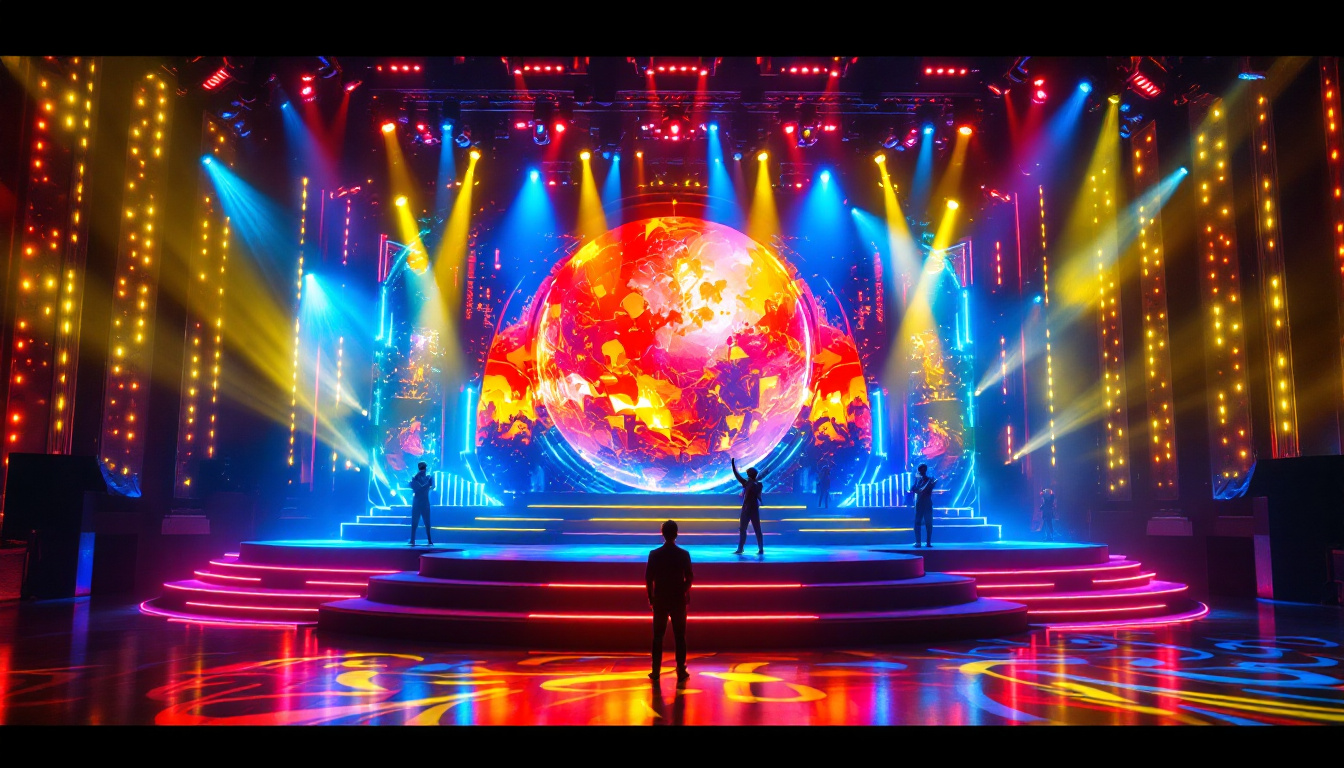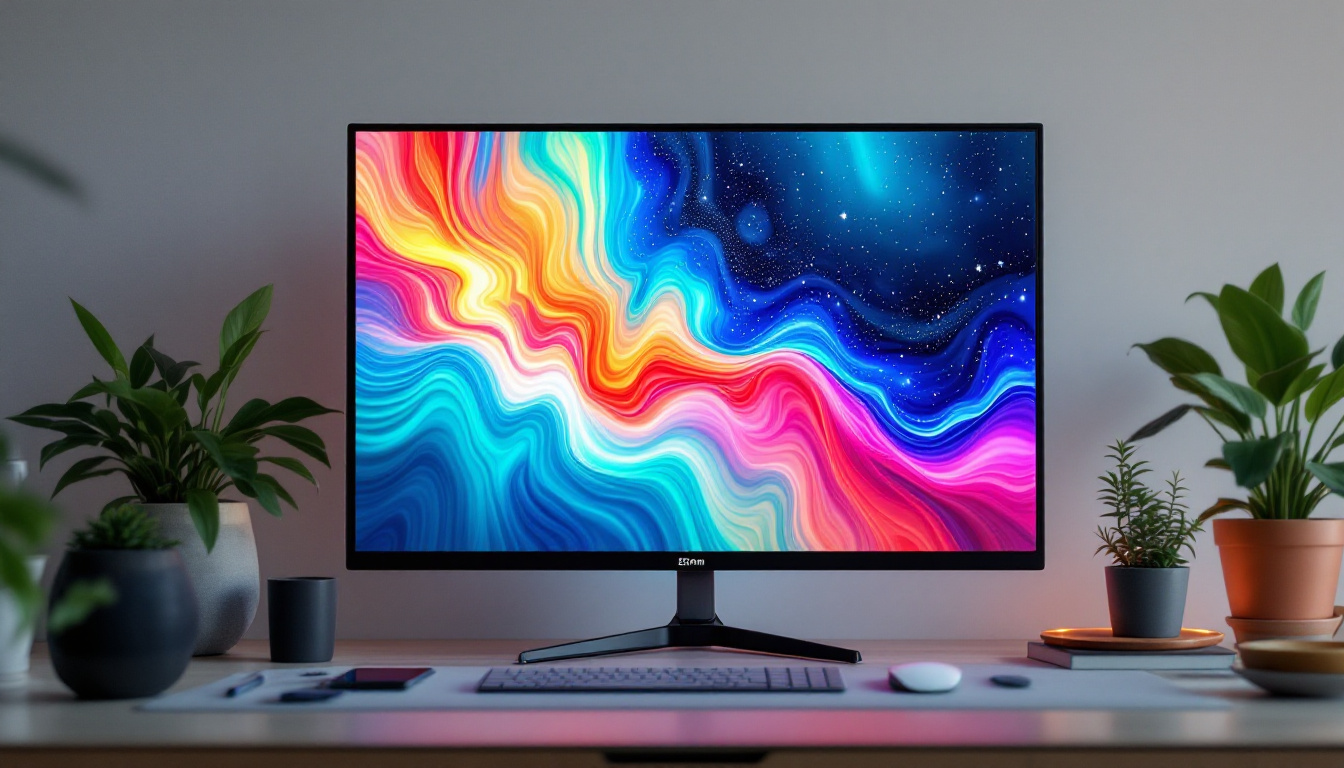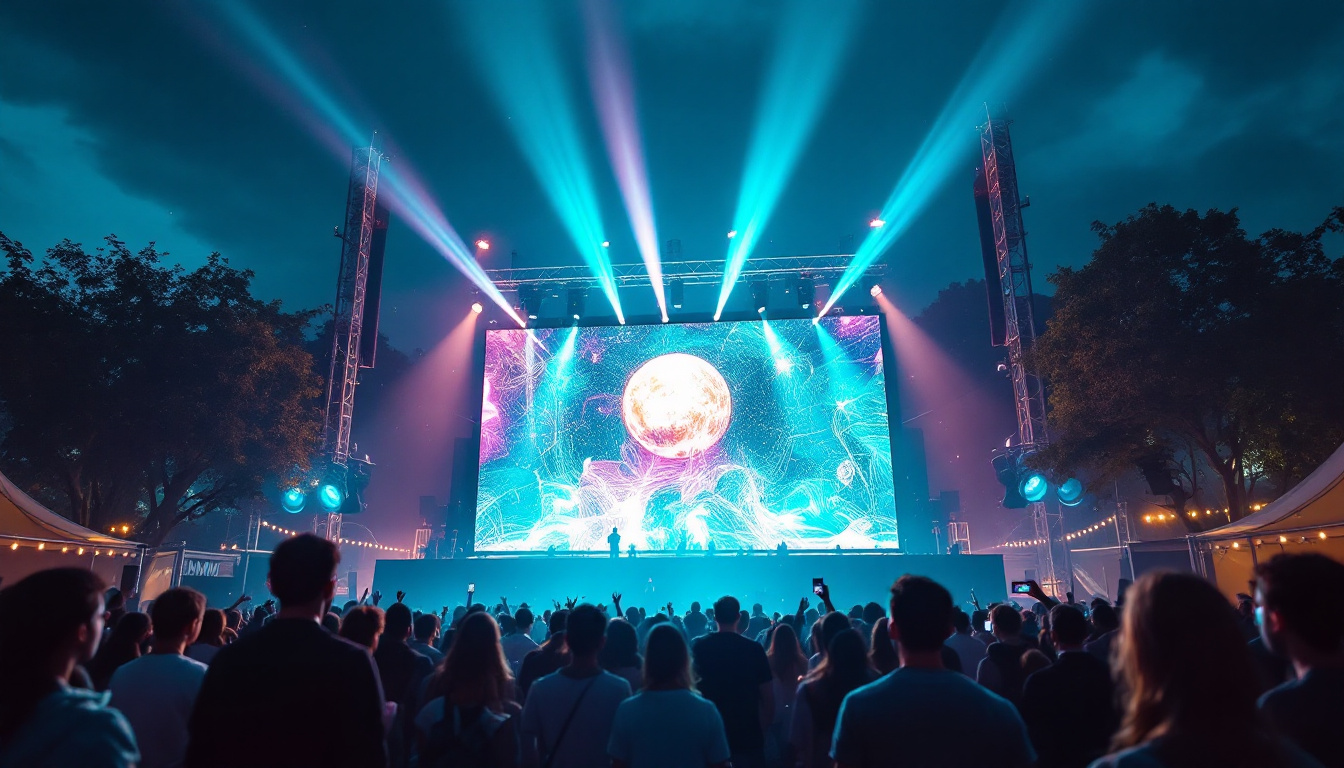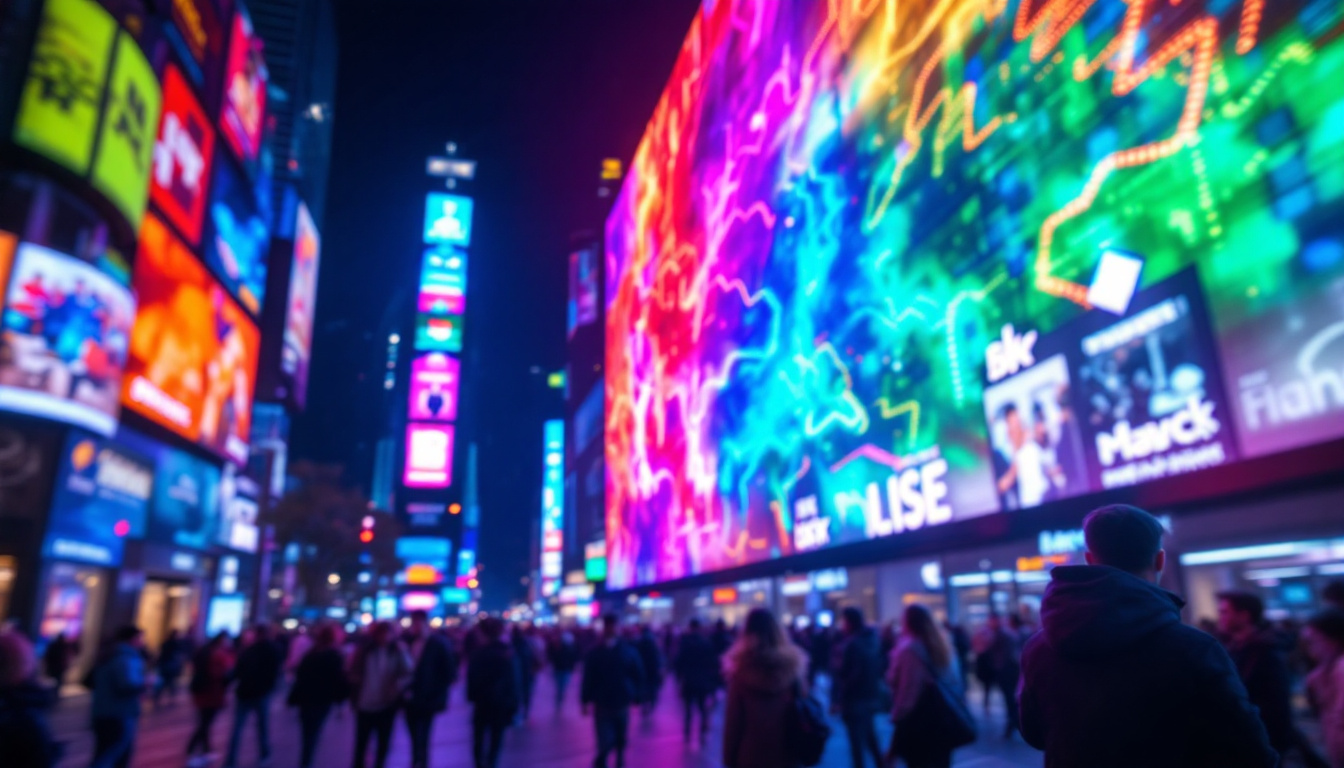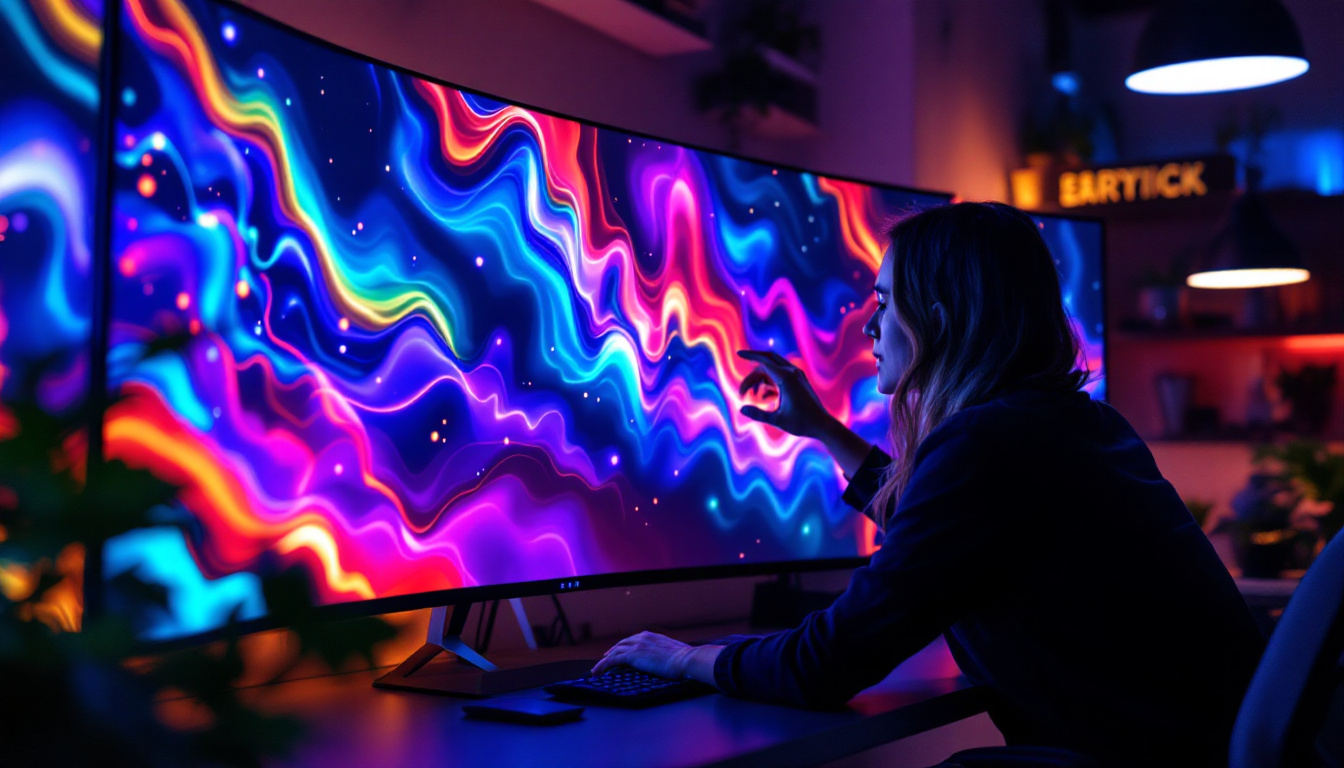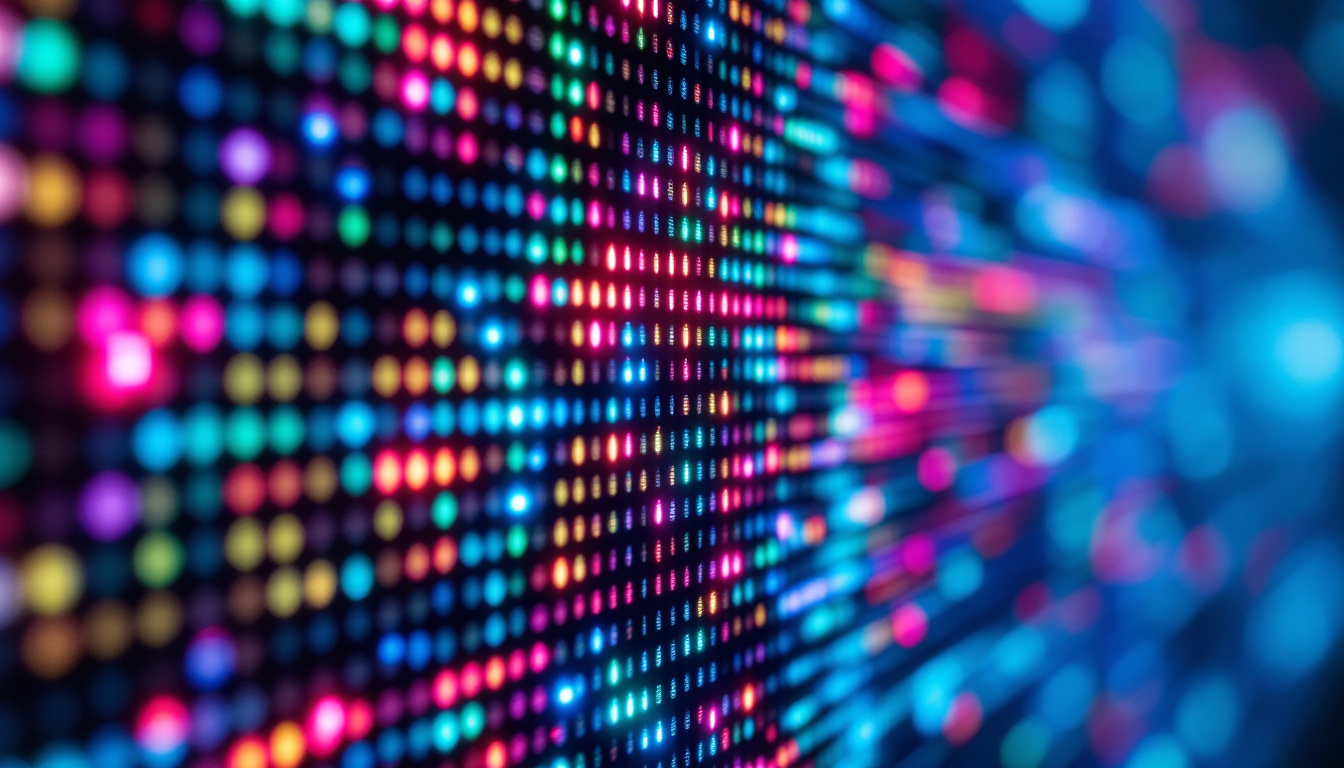In recent years, LED displays have transformed the landscape of visual communication, becoming a staple in advertising, entertainment, and information dissemination. Their vibrant colors, energy efficiency, and versatility make them a preferred choice for businesses and organizations looking to capture attention. This article delves into the intricacies of LED displays, exploring their technology, applications, and advantages.
Understanding LED Technology
Light Emitting Diodes (LEDs) are semiconductor devices that emit light when an electric current passes through them. Unlike traditional incandescent bulbs, LEDs are highly efficient, converting a significant portion of energy into light rather than heat. This efficiency is one of the primary reasons for their widespread adoption in display technology. Additionally, LEDs have a much longer lifespan compared to incandescent and fluorescent lights, often lasting up to 25,000 hours or more. This durability not only reduces the frequency of replacements but also contributes to lower maintenance costs, making them an attractive option for both consumers and businesses alike.
The Basics of LED Operation
At its core, an LED display consists of numerous tiny LEDs arranged in a grid. Each LED can emit red, green, or blue light, and by varying the intensity of these colors, a full spectrum of colors can be produced. This RGB (Red, Green, Blue) color mixing is fundamental to how images and videos are displayed on LED screens. The ability to mix these primary colors allows for the creation of millions of different shades, enabling stunning visual experiences that can captivate audiences in various settings, from home theaters to large public displays.
When an electric current is applied to the LED, it excites the electrons in the semiconductor material, causing them to release energy in the form of photons—this is what produces visible light. The brightness and color of the emitted light can be controlled precisely, allowing for dynamic and engaging displays. Furthermore, advancements in LED technology have led to the development of features such as dimming capabilities and color temperature adjustments, which enhance the viewing experience by providing more natural lighting conditions and reducing eye strain during prolonged use.
Types of LED Displays
LED displays come in various types, each suited for specific applications. The two most common types are:
- Direct View LED Displays: These displays are made up of individual LEDs that form the entire image. They are often used for large outdoor billboards and stadium screens, where high brightness and visibility are essential. The modular nature of direct view LED displays also allows for flexible sizing and shapes, making them ideal for creative advertising solutions and dynamic installations.
- LED Backlit Displays: These screens use LEDs to illuminate an LCD panel from behind. They are commonly found in televisions and computer monitors, providing enhanced brightness and color accuracy. The backlighting technology has evolved, with options like edge-lit and full-array backlighting, each offering different advantages in terms of contrast ratios and uniformity of light distribution.
In addition to these common types, there are also specialized LED displays, such as transparent LED screens that allow for visibility through the display itself, and flexible LED panels that can be curved or shaped to fit unique environments. These innovations are pushing the boundaries of what is possible in visual technology, enabling new forms of artistic expression and interactive experiences in retail spaces, museums, and public art installations. As the technology continues to advance, the potential applications for LED displays are virtually limitless, promising even more exciting developments in the future.
Applications of LED Displays
LED displays have found their way into a multitude of sectors, each leveraging the technology for different purposes. Their adaptability is one of their greatest strengths, allowing them to serve a wide range of functions.
Advertising and Marketing
In the realm of advertising, LED displays have become a powerful tool for marketers. Their ability to showcase vibrant, eye-catching content makes them ideal for billboards, storefronts, and event venues. Dynamic content can be updated in real-time, allowing businesses to promote special offers, events, or new products instantly.
Moreover, the use of LED displays in public spaces enhances brand visibility and engagement. With the capacity to display video content, animations, and interactive elements, advertisers can create memorable experiences that resonate with audiences. The integration of sensors and audience analytics can further refine marketing strategies, allowing businesses to tailor their messages based on the demographics of passersby, thus maximizing impact and return on investment.
Entertainment and Events
LED displays are ubiquitous in the entertainment industry, from concerts and festivals to theater productions and sporting events. Large-scale LED screens are often used to display live feeds, graphics, and animations, enhancing the overall experience for attendees.
In addition to their use in venues, LED displays are also utilized in mobile applications, such as LED trucks or trailers, which can be deployed for events, parades, or promotions. This mobility allows for greater flexibility in reaching target audiences. Furthermore, the ability to synchronize multiple displays across a venue creates a cohesive visual experience, captivating audiences and immersing them in the event. The technological advancements in LED display resolution and brightness also mean that these screens can perform exceptionally well in various lighting conditions, ensuring visibility even in bright sunlight.
Information Dissemination
public information displays, such as those found in transportation hubs, schools, and corporate environments, benefit significantly from LED technology. These displays can convey real-time information, such as arrival and departure times, news updates, or emergency alerts, ensuring that the public stays informed.
In educational settings, LED displays can be used to enhance learning experiences, displaying interactive content and facilitating communication between teachers and students. Their versatility makes them an invaluable asset in various environments. For instance, in corporate offices, LED displays can serve as digital signage to communicate company news, promote employee achievements, or provide motivational quotes, fostering a positive workplace culture. Additionally, in museums and galleries, LED technology can be employed to create immersive exhibits that combine visuals with audio, engaging visitors and enriching their understanding of the displayed artifacts.
Advantages of LED Displays
The growing popularity of LED displays can be attributed to their numerous advantages over traditional display technologies. Understanding these benefits can help businesses and organizations make informed decisions when considering display solutions.
Energy Efficiency
One of the most significant advantages of LED displays is their energy efficiency. LEDs consume considerably less power than traditional lighting technologies, resulting in lower electricity bills and a reduced carbon footprint. This energy efficiency is particularly beneficial for businesses that operate large displays continuously.
Longevity and Durability
LED displays are known for their long lifespan, often exceeding 50,000 hours of operation. This longevity reduces the need for frequent replacements, leading to lower maintenance costs over time. Additionally, LEDs are more resistant to shock and vibration compared to other display technologies, making them suitable for various environments, including outdoor settings.
High Brightness and Visibility
LED displays offer exceptional brightness levels, making them easily visible even in direct sunlight. This high visibility is crucial for outdoor advertising and public information displays, ensuring that content is legible and engaging regardless of lighting conditions.
Challenges and Considerations
While LED displays offer numerous benefits, there are also challenges and considerations that potential users should be aware of. Understanding these factors can help in making informed decisions regarding LED technology.
Initial Investment
The initial cost of purchasing and installing LED displays can be relatively high compared to traditional display technologies. However, it is essential to consider the long-term savings associated with energy efficiency and reduced maintenance costs. Many businesses find that the return on investment (ROI) justifies the initial expenditure.
Content Management
Creating and managing content for LED displays requires specialized knowledge and tools. Businesses must invest in content management systems and possibly training for staff to ensure that the displays are used effectively. Regularly updating content is vital to keep audiences engaged and informed.
Environmental Impact
While LED displays are more energy-efficient than traditional options, they still have an environmental impact, particularly concerning the materials used in their production and disposal. It is crucial for businesses to consider sustainable practices when sourcing LED displays and to explore recycling options for old units.
Future Trends in LED Display Technology
The LED display industry is continually evolving, with advancements in technology paving the way for new applications and improved performance. Staying informed about these trends can help businesses leverage the latest innovations.
MicroLED Technology
MicroLED technology represents a significant leap forward in display technology. By using microscopic LEDs, these displays can achieve higher resolutions, improved color accuracy, and even greater energy efficiency. MicroLEDs are expected to play a crucial role in the future of televisions, smartphones, and large-scale displays.
Flexible and Transparent Displays
Innovations in flexible and transparent LED displays are opening new possibilities for design and application. These displays can be integrated into various surfaces, such as windows or curved structures, allowing for creative advertising and information dissemination. The ability to blend technology seamlessly with architecture is a game-changer for many industries.
Artificial Intelligence and Automation
The integration of artificial intelligence (AI) and automation in content management systems is set to revolutionize how businesses use LED displays. AI can analyze audience behavior and preferences, enabling dynamic content adjustments that enhance engagement. This level of personalization can significantly improve the effectiveness of advertising campaigns.
Conclusion
LED displays have undoubtedly transformed the way information is communicated and consumed. Their vibrant colors, energy efficiency, and versatility make them an invaluable tool across various industries. As technology continues to evolve, the potential for LED displays will only expand, offering even more innovative solutions for businesses and organizations.
By understanding the technology, applications, advantages, and challenges associated with LED displays, stakeholders can make informed decisions that enhance their visual communication strategies. As the future unfolds, embracing these advancements will be key to staying competitive in an increasingly visual world.
Explore Cutting-Edge LED Displays with LumenMatrix
Ready to elevate your visual communication strategy with the latest in LED display technology? LumenMatrix is at the forefront of innovation, offering a diverse range of LED display solutions tailored to your needs. From Indoor and Outdoor LED Wall Displays to dynamic Vehicle and Sports LED Displays, our products are designed to captivate and engage your audience. Experience the transformative power of LED displays and discover how our Custom, All-in-One, and Transparent LED solutions can revolutionize your brand’s presence. Check out LumenMatrix LED Display Solutions today and step into the future of visual storytelling.

